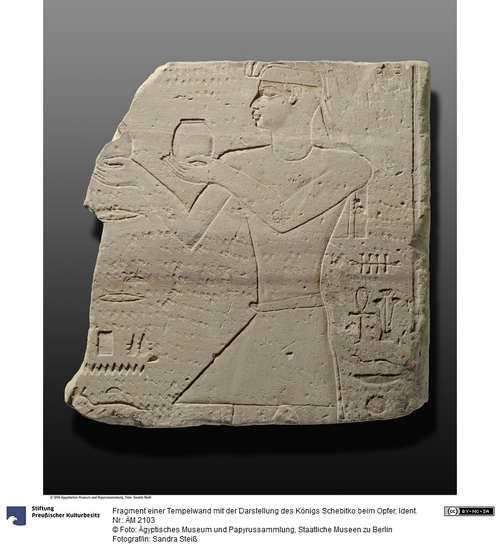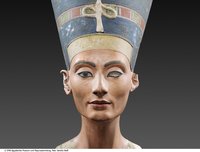Das Bildnis des zweiten Herrschers der 25. Dynastie zeigt ihn in der Kultszene, dem Gott Wein in zwei Gefäßen darreichend. Als König des Reiches von Kusch ist Schebitko kenntlich an der Kappe mit dem breiten Diadem, an der charakteristischen Windung, mit der die zwei Uräen (als Repräsentanten von Kusch und Ägypten) auf dem Scheitel liegen, der Höhe des kurzen Schädels, dem starken Hals und der auch im Relief noch deutlichen Rundung des Gesichtes mit den vollen Lippen.
Angaben zur Herkunft:
Schebitko (Shebitqo) / Ägypten
Datierung engl.: 698 BCE to 690 BCE, Shebitku
Karnak (Ägypten / Oberägypten)
Ptah-Tempel, 2. Tor, Ostwand (Tempel)
en

